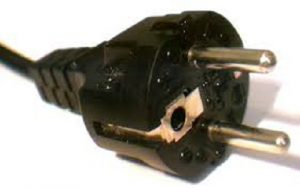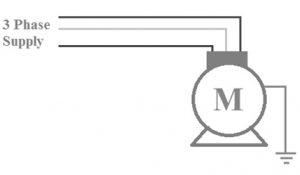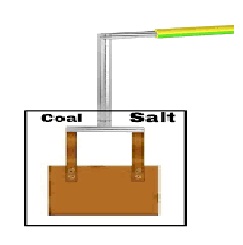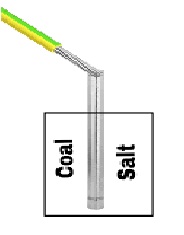We know that all the electrical and electronic appliances run on electricity. The home appliances are like air conditioners, refrigerators, televisions, greasers, washing machines, grinders, etc. Have you ever noticed that why the plug systems on the wall contain three pins instead of two pins? Home appliances are designed with metals, metal components, and metal frames. Metals are great conductors that allow the flow of current through it. But there is a chance of electrocution due to current leakage throughout the undesired lane. To overcome this problem electrical earthing is very important for homes, buildings, etc.
What is Earthing?
An earthing can be defined as when immediate electrical energy is transferring directly to the ground/earth with the help of a low-resistance cable. The process of this can be done by connecting the neutral part of the supply system to the earth. For earth, the galvanized iron cable is used. The earthing gives the easy lane to the leakage current so that the equipment can be protected from short circuit damage.

earthing
Whenever the metal part in the appliance is connected to the wire, there is a chance of installation failure in cable, so the metal in the equipment will get charged and fixed charge mount ups on it. If someone touches a charged metal, then he will get a severe shock. To avoid these incidents, home appliances must be protected from earthing. So in electrical installation systems, grounding is very important to protect from electric shock/ short circuits.
Why it is Necessary?
There are several reasons why this equipment needs to be connected to the ground/earth like the following.
- Protection of constructions from its lightning systems and equipment
- Electrical equipment safety
- Human protection
- Protection from overload
- Stabilization of voltage
- Prevention of injury, damage, and death
- To guard the workers who frequently operate electrical devices that may give a shock to them
- To maintain the device voltage stable in case of single-phase to GND fault.
- If the errors reside in the electrical system for a lengthy time, they can cause a problem to the system so that the stability of the system can be reduced.
- When the equipment is not grounded properly, then they can generate electrical noise which can cause damage & reduce device efficiency.
- The malfunctioning devices always leaks electricity so there is a chance to get device damage.
Components used in Earthing
This system uses different components like earth cable, joint, and plate
Earth Cable
By using this, metallic parts in an electrical system can be connected like fuses, transformers, plug sockets, distribution boxes, metallic shells, motor’s metallic parts, generators, etc. This cable range mainly depends on the size of the cable used in the circuit.
Earthing Joint
The earthing joint is the connection of ground electrode & conductors to the continuity conductor of the ground. The tip wherever the earthing joint fixes the ground continuity conductor is called a connecting end.
Earth Plate
It is hidden underground and connected to the lead of grounding. Earth electrode is a metallic rod, pipe or plate. It has very little resistance to carry the fault current toward the ground securely. This plate is made with a copper rod or iron rod and it must be placed in a wet soil only. The arrangement of this can be done in vertical by coated with charcoal lime & salt in the region of the plate. By doing this, the earth plate can be protected and moisture of soil can be maintained. For better earthing, this plate must be arranged in 4meters distance.
Types of Earthing
Electrical earthing is classified into two types which include the following.
- Equipment Earthing
- Neutral Earthing
Equipment Earthing
This type of earthing is used for electrical equipment. The neutral part of the equipment is the metallic frame and it is connected to the ground using the conducting wire.

equipment-earthing
If any error occurs within the equipment, then short-circuit current flows toward the earth with the help of a wire. Therefore, electrical equipment can be protected from damage.
Neutral Earthing
In this type of earthing, the neutral part of the system can be connected directly toward the earth with the help of the wire. This type of grounding is also called as the system earthing. So it is mostly used in a system which includes star winding. For instance, this is used for equipment like a transformer, motor, generator, transformer, etc.
There are two types of earthing concepts used in construction projects which include the following.
Plate Type
In this type, the components used are made up of copper-like electrical wires, conductors, galvanized iron otherwise cast iron, pipes, plates, rods, etc. The size of the plate that is used in the earth pit is two feet height & 0.25 inch thick. This plate must be arranged vertically within the ground pit below 3 meters from the soil. For better electrical earthing, the condition of earth moisture should be maintained in the region of the plate.

plate-earthing
Pipe Type
In this type, a galvanized steel pipe is vertically arranged in wet soil, and it is frequently used in homes, offices for electrical and transmission lines installation. This is the most frequently used system especially in typical or moisture conditions of the earth. This type of earthing uses copper pipes and the length of these pipes mainly depends on the content of the earth. Generally, this pipe diameter is 1.5 inches and the length may change from 2.75 to 15.5 feet for dry and rocky soils.

pipe-earthing
Factors that Affect while Installation
There are many factors to be considered while installing earthing.
- The first and most important factor is the soil because it is used for calculating the efficiency of the earthing like the level of moisture, resistance, and salts within the soil. These will play an essential role in deciding how this is made.
- The second factor is the soil composition because a soil which has rocks will be treated in a different way compared with wet soil.
- The third factor is the earth pit location because it is essential to decide how the installation must be completed. If there are any rocks within the soil, that will affect while installation.
Know More about Underground Cable MCQs.
Therefore, an earthing system is used in an electrical network that works as a safety measure for securing human life & equipment. The main objective of this system is to offer another lane for hazardous currents to supply. So that fire accidents or equipment damage can be avoided. Here is a question for you, what are the applications of grounding?